Streets ahead in Kuala Lumpur
Everyone’s favourite Asian street food expert shares his map of KL’s culinary delights.
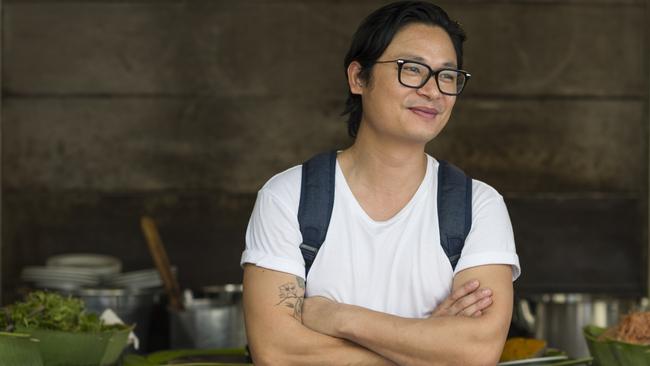
Sprawling Kuala Lumpur is the centre of the Malay universe, a relentlessly modern dynamo of a metropolis. You have to look slightly harder for street food here but people still throng, as they’ve always done, to carts, stalls and casual eateries, in search of their favourite hawker-style dishes. From early in the morning until late at night, this city has a collective stomach that doesn’t rest. It’s my kind of place.
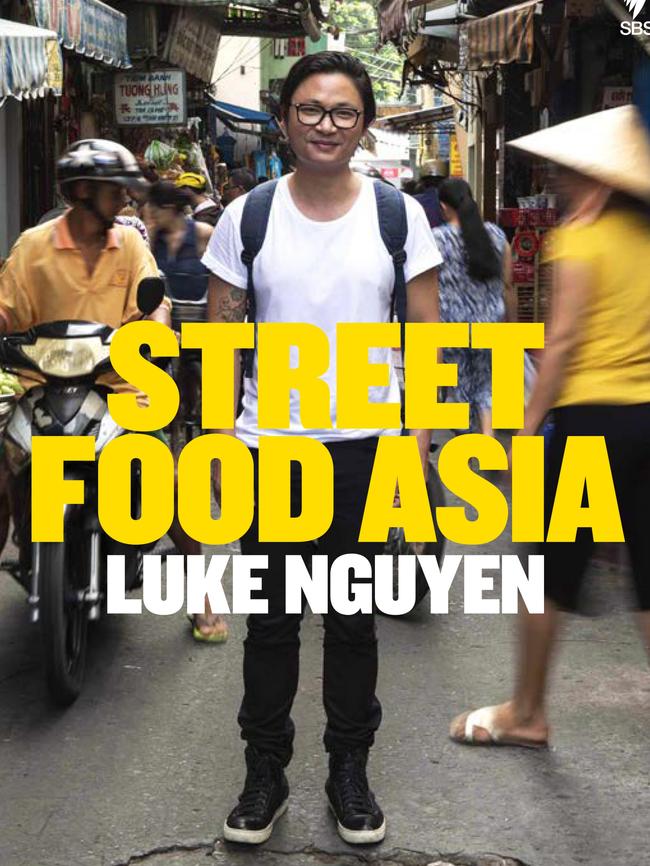
It’s been said before but I’ll say it too — Malay food could well be the original fusion cuisine. Just look at the influences — indigenous Malay, Chinese, Indian, Sri Lankan, English, Dutch and Portuguese, all combining to make one amazing hodgepodge. As I walk the tree-lined streets and explore hawker centres, I feel like I’m in Mumbai one minute and Beijing the next. I meet Chinese women queuing for pakoras, curry puffs and vadai in Brickfields, a staunchly Indian quarter. Meanwhile, in a Hokkien-dominated area, ethnic Indians slurp bak kut teh, a porky, herbal soup from the Chinese medicinal food tradition. So many different languages, aromas and cultures all mashed up together make Kuala Lumpur intriguing to me.
At Imbi Market, which is unbelievably busy even at 7am, the atmosphere is frenetic, but everyone waits patiently for his or her breakfast to materialise. My favourite dish is popiah, made using fine, freshly cooked wrappers, the filling addictively crunchy with peanuts, fried breadcrumbs, fried shallots and turnip. A close second favourite is silky chee cheong fun, wide, slippery rice flour noodles topped with thick, spice-scented soybean sauce and a huge selection of garnishes. These dishes have layer upon layer of strong, complex flavours and so many textures. Everything is cooked with care, served with real passion and tastes so, so fresh. With every mouthful I fall more in love with Malaysian street food.
Slowing the pace down a bit, I have a great time meeting Grandma Lim, who’s 74 and has been making pan mee, a type of rustic noodle that she rolls out with a beer bottle, for 40 years. She serves it in a light, clear, anchovy-based broth with shiitake mushrooms and choy sum (Chinese flowering cabbage); those noodles taste gorgeous.
There’s also a real sense of fun around eating here, which I think is very, very cool. Some dishes, and their cooks, take this to a whole new level, like the flying wantan man, who tosses his noodles two storeys up in the air, then catches them in his wok before cooking them. Eating “sup gearbox” always cracks me up — who else but a Malaysian would think to serve an entire, gigantic beef hock in a bowl of flavoursome soup, complete with a straw poking out of the bone for sucking up the marrow?
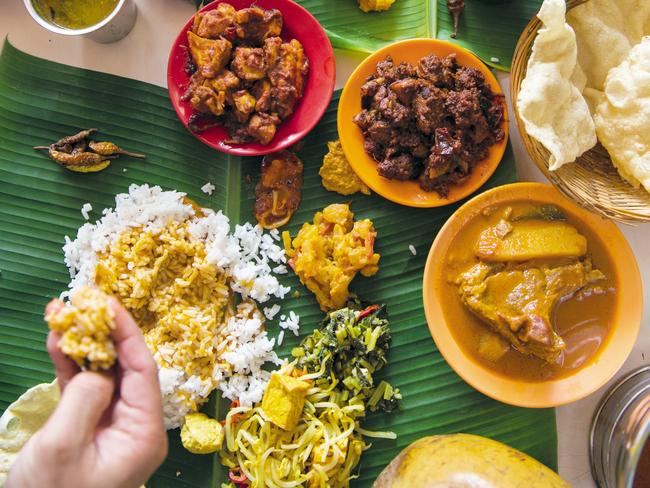
Banana leaf rice. Local name: Nasi kandar.Where: Usha’s, Jalan Othman, Petaling Jaya Old Town.
The thing that really blows me away about Kuala Lumpur is how various culinary strands all come together here. One of these is seen in the significant Indian influence and one dish from this tradition I have come to truly appreciate is Indian banana leaf rice. You literally eat steamed rice, plus an assortment of curries and accompaniments, off a large, fresh banana leaf. The go-to place for this is Usha’s, a food stall on Jalan Othman in Petaling Jaya Old Town, not far from Kuala Lumpur’s city centre.
Usha is the matriarch-cook and she’s been pulling in the locals for more than 20 years with her tasty curries. One of the “aunties” who works here will come and scoop rice onto your leaf, then around that go pickles, pappadums, dhal, chutneys, maybe a boiled egg and then the curries. These are all pre-cooked and you choose the ones you want — Usha is famous for her goat tripe curry, dry mutton curry, chicken korma and salted fish curry. She also cooks a mean fried chicken and fried fish and there are some unusual things on her menu, like the finely sliced bitter melon that is battered then deep-fried until it’s really crispy. And her dried salted chillis, too, which are great.
Everything is aromatic with spices and curry leaves and you eat using the fingers of your right hand. Done well, this is a super elegant way to eat. Done clumsily it’s ... well, a bit messy, but fun nonetheless (you can opt for cutlery if you really want). Eating here is a really warm experience as you feel like you are a guest in a family home, not at a food stall. When you’ve finished your meal, fold the banana leaf up, from the top down, to cover all the food bits; it’s both a sign of respect and says that you’ve finished (and loved) the food.
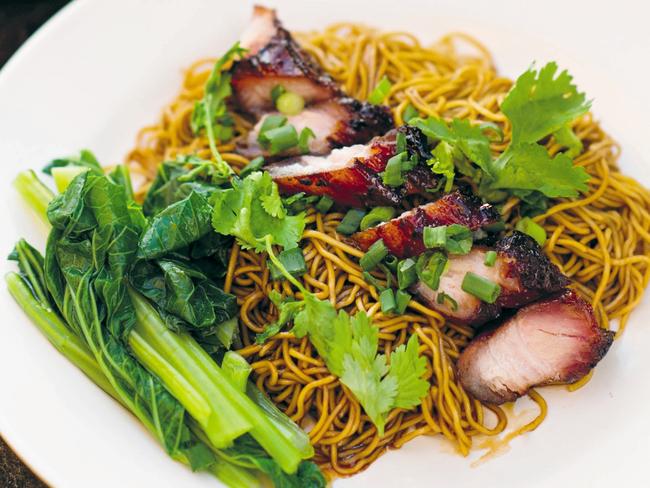
Flying wantan mee with roast pork. Local name: Wantan mee babi salai. Where: Jalan 22, stall next to Seapark Market, Petaling Jaya.
Right next to the Seapark Market in Petaling Jaya, you’ll find a guy at a stall making wantan mee. But his aren’t just any old wantan mee because he makes his noodles fly (literally). After blanching the noodles for your order, he flings them really high into the air (we’re talking two storeys), deftly catches them then keeps on cooking the dish. It’s so much fun to watch and whether it’s just a gimmick, I’m not sure. Some people honestly reckon throwing the noodles like this makes them taste better, imparting a springier texture. I’m thinking it’s a very clever way to get rid of all the water — you don’t want wet noodles for this dish.
Wantan mee is a street food classic in Kuala Lumpur. Basically it consists of thin egg noodles topped with an almost black sauce made from soy sauce, sesame oil and lard. Slices of sticky, sweet, homemade char siu (Cantonese barbecue pork) go over the top with some blanched choy sum (Chinese flowering cabbage). The small bowl of wantan in clear, pork-flavoured soup is to have alongside your noodles. This is considered fast comfort food in Kuala Lumpur and it’s simple but delicious. Here’s a tip if you want to go to the market to see my noodle hurler — he starts cooking at about 6pm and it’s best to get there early to see him in action while the light is still good.
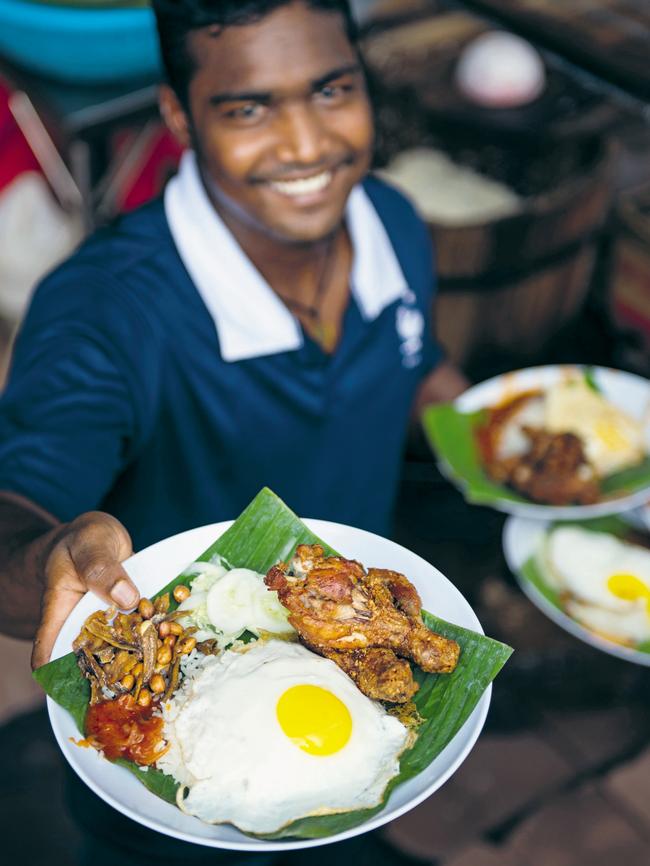
Coconut rice. Local name: Nasi lemak. Where: Jalan 21/11b, Seapark Market, Petaling Jaya
This has to be the best loved Malay dish of all time; it’s considered the national dish of the country and although traditionally served for breakfast, you’ll find it available at any time of the day. There are tons of variations but essential to nasi lemak is the heap of fragrant, coconut and pandan-scented rice (nasi lemak actually means “coconut rice”).
A large spoonful of sambal ikan bilis (a spicy, deep-flavoured sambal based around deep-fried dried anchovies) is another constant, as are toasted peanuts, a fried egg and slices or chunks of cucumber. From there, you might get a serve of curry, rendang or fried chicken on the side — there are endless possibilities, depending on the vendor.
It’s thought nasi lemak originated in farming areas where workers needed a substantial start to the day and it certainly delivers on that score, offering up plenty of good fats, carbs, protein and vegetables. Nowadays, you can find it pretty much everywhere — on the streets, in markets, in casual canteens and even at more expensive restaurants — sometimes wrapped up in a banana leaf, or neatly arranged on a plate. I like to order it from a Mamak stall, along with some pulled tea, and watch the world go by. Experiences don’t get more “Malaysian” than this.
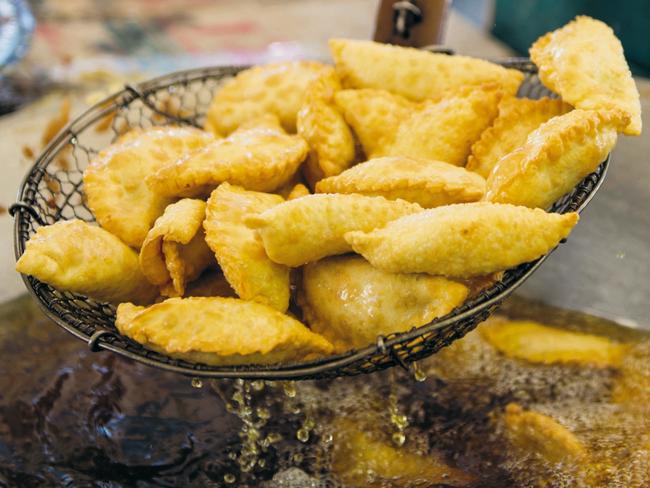
Malay curry puffs. Local name: Karipap. Where: Anmar’s Indian Cake Stall, Brickfields.
These yummy things are basically the meat pies of Malaysia (although there are vegetarian versions too) and they are so, so good. My good friend Thana takes me to Brickfields, one of the largest Indian areas of Kuala Lumpur, and we stop by Ammar’s Indian Cake Stall, where he has been coming for Indian snacks since he was a young boy. It’s a family-run stall that’s quite famous in these parts and people flock for the delicious, inexpensive home-style snacks and cakes.
When we arrive, they’re doing a brisk trade in all sorts of fried goodies — you just grab a basket and take what you like from the huge assortment. They’ve got pakoras, appam, vadai and addictive sweets called urundai, which look like dumplings and have soft, gooey centres filled with palm sugar.
I love watching “karipap” being made. After rolling out and filling the pastry semi-circles, they use a special little cutter–crimper contraption to make the edges neat. When they’re finished, they’re all perfectly uniform.
